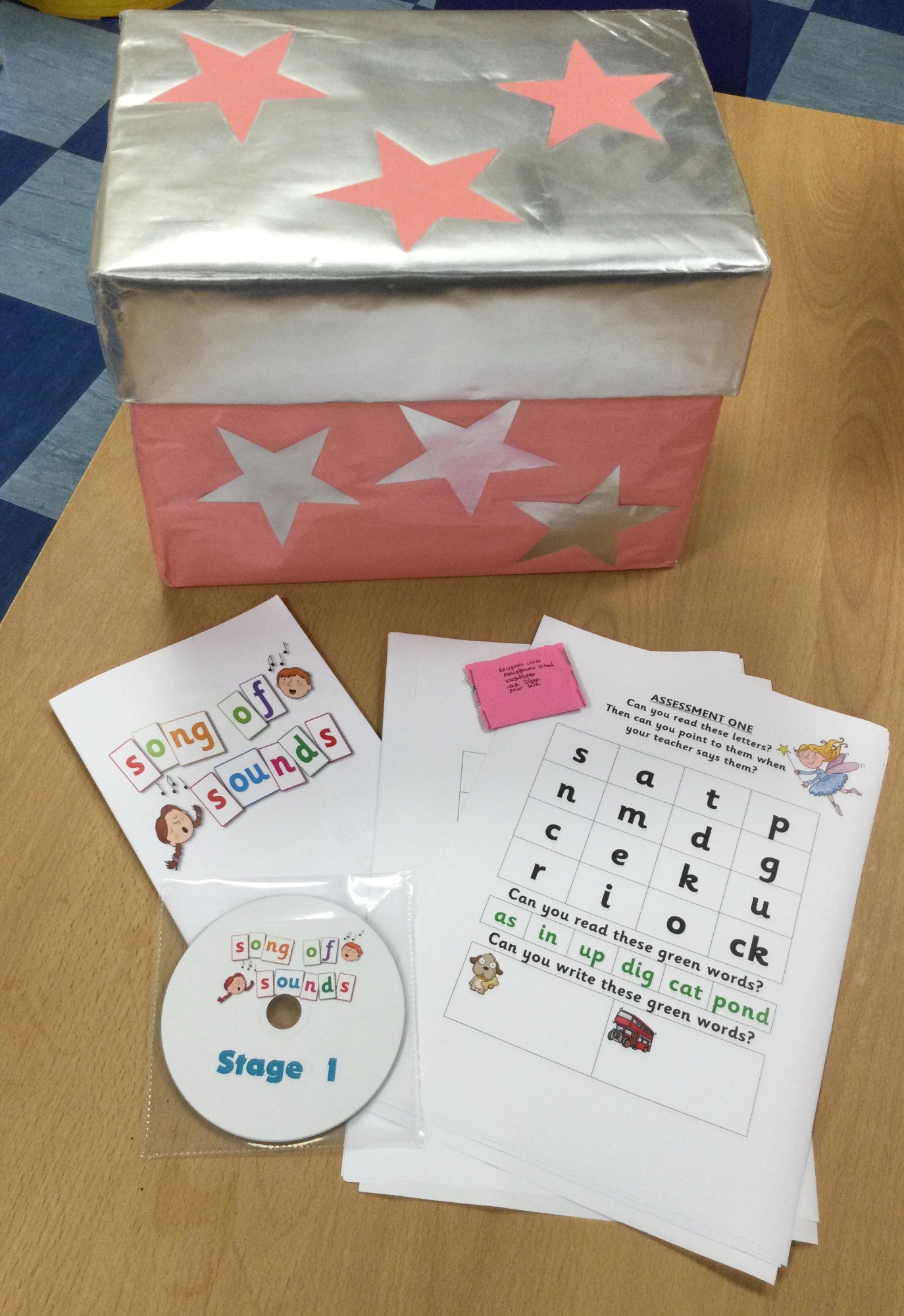 How does Song of Sounds assess children's progress?
How does Song of Sounds assess children's progress?
Regular diagnostic and formative assessment is a key feature of the programme and helps not only to monitor children’s progress but also to identify key areas for revision. With Song of Sounds, children are diagnostically assessed on entering school, then at specific points throughout the programme. These more formal assessments should be carried out on a one-to-one basis by a teacher or teaching assistant. These assessments focus on each individual child’s grasp of concepts taught so far including their ability to:
- Read and identify grapheme-phoneme correspondences taught up to that point
- Read ‘green’ words containing GPC’s taught up that point
- Write dictated ‘green’ words containing GPC’s taught up that point
- Read and spell common exception (‘tricky’ words) taught up to that point
- Read ‘green’ sentences made up of GPC’s and tricky words taught up to that point.

Our detailed assessment schedules provide an overview of when each assessment takes place during the programme and which skills are tested at each assessment point.
These assessments will clearly show teachers which children are on track and secure with all the skills taught so far and so are ready for the next level of decodable reading books to help them revise and apply these skills through decodable practice.
The findings of these assessments will also help teachers identify any children who are at risk of falling behind, so that appropriate support can be provided and enable teachers to plan carefully to meet individual needs in their ongoing phonic provision.
Children who are at risk of falling behind need extra practice to consolidate and master the phonic skills taught. Assessments will enable teachers to identify the specific gaps in children’s phonic skills and knowledge. The results of the assessments should be collated and then an intervention plan devised to support these children depending on need: small group interventions can support children struggling with a similar concept to help them catch up and keep up, but one-to-one tutoring should be used for the lowest attaining pupils to ensure they get the targeted, more specialised support they need. These support sessions should be in addition to their usual phonics teaching and should be direct teaching sessions focused explicitly on a gap in their learning with an appropriately trained teacher or teaching assistant.
How should I carry out the formative assessments?
- The one-to-one assessments should be carried out by the child's teacher or teaching assistant.
- Each assessment should take about 5 minutes per child.
- You should sit somewhere quiet with the child so it is easy to concentrate and hear them.
- Then just follow the instructions on the assessment sheet, always ensuring that you are positive and encouraging!
- Check all children’s knowledge of graphemes on the assessment sheet, putting a tick next to all the graphemes they can read and leaving any they don't know blank.
- You may find with less able children that they are unable yet to blend their sounds for reading or attempt writing words. Give them a go in case they surprise you but if they are beginning to struggle, don’t labour the point, move on!
- A reward at the end is a nice idea.
How should I collate the results of my assessments?
- Make a list of the children in your class and next to each child make a list of any gaps in their phonic knowledge. You can do this yourself or use our handy assessment tracker grids to help you.
- You will begin to see a picture emerge of generally where you class are sitting and where, as a class, they may need some revision and consolidation work. For example, there may be a particular grapheme or set of graphemes that lots of children in the class need consolidation work on such as sh, ch and th, or perhaps you can see they have good grapheme knowledge but need some further work on blending and segmenting. Maybe they need further practise in reading their tricky words? In this way, you can plan for your next steps in teaching for your class as a whole, taking into account their needs as a cohort.
- You will also be able to clearly see where any specific gaps lie for individual children. You now need to plan for some phonic intervention work to meet these children's needs and help them to catch up.
How should I plan for phonic intervention work?
- Support sessions should be in addition to the children's usual phonics teaching and should be direct teaching sessions focused explicitly on a gap in their learning with an appropriately trained teacher or teaching assistant.
- Small group interventions should be planned to support children struggling with a similar concept to help them catch up and keep up, for example, you may have 3 children in your class need some support with the GPC 'm' so they can have a catch-up session together.
- The 'Intervention' section in our subscription area will support you in planning these small-step intervention sessions to maximise progress for children.
- The comprehensive daily sessions are ideal to use for intervention work as they are direct teaching sessions with extensive teacher-child interaction and involve a multi-sensory approach.
- One-to-one tutoring should be used for the lowest attaining pupils to ensure they get the targeted, more specialised support they need.
How should I use my assessments to allocate decodable reading books to my pupils?
When collating the results of your assessments, you will instantly be able to see which pupils have secure knowledge of the GPCs and common exception words you have taught. Teachers can then follow our sequence of progression for each stage to allocate the appropriate decodable reading books. For example, the first assessment point in Stage 1 is in Week 4. The assessment checks the children's knowledge of GPCs: s a t p i n m d and of Common Exception words: a, is and their ability to blend. If the children are secure in all of these skills, they can begin reading books from level Pink 1A which only contain these GPCs and common exception words. The books can be read in any order as they all practise the same skills. If however, there are children who are not secure in these skills yet, you would plan some intervention work as above, in addition to their usual phonics teaching. At the next assessment point, you would repeat the assessment to see if they now have secured these skills and can move onto the appropriate decodable readers or whether they need further intervention work.




